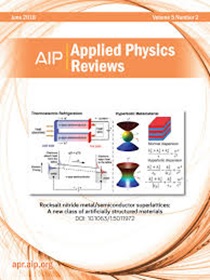自供电触觉超敏锐与软磁电皮肤
IF 11.6
1区 物理与天体物理
Q1 PHYSICS, APPLIED
引用次数: 0
摘要
触觉电子皮肤的发展旨在用更少的传感单元捕获更多的触觉信息,解决传统触觉电子皮肤中传感单元密度有限所带来的可识别方向的限制。作为一种自供电解决方案,柔性磁电系统有望有效地满足这一要求。本文通过模拟人体皮肤的结构和触觉敏锐度,提出了用于多向触觉传感的软磁电皮肤。sme集成了力磁耦合层和电磁感应层,使其仅使用4个线圈即可检测25个点的垂直力和12个方向的切向力,显示其触觉超敏锐。实验和仿真结果表明,该传感器具有稳定、自供电的多向传感机制。此外,即使在不同的压缩条件下,定制的机器学习模型在检测37个力方向时也达到96.01%的准确率。结合实时传感系统,突出了其在机器人触觉传感和人机界面方面的应用潜力,展示了其应用的多功能性。综上所述,中小企业以最小的传感单元数量和能耗实现了先进的多向触觉感知能力。本文章由计算机程序翻译,如有差异,请以英文原文为准。
Self-powered tactile hyperacuity with soft magnetoelectric skins
The development of tactile e-skins aims to capture more tactile information with fewer sensing units, addressing the limitation of discernible directions imposed by the limited density of sensing units in traditional tactile e-skin. As a self-powered solution, flexible magnetoelectric systems are expected to fulfill this requirement effectively. The soft magnetoelectric skin (SMES) has been proposed here for multidirectional tactile sensing by imitating the structure and tactile hyperacuity of human skin. The SMES integrates a force–magnetic coupling layer with an electromagnetic induction layer, enabling it to detect vertical forces at 25 points and tangential forces in 12 directions using only 4 coils, showing its tactile hyperacuity. Both experimental and simulation results demonstrate its stable, self-powered multidirectional sensing mechanism. Additionally, a customized machine learning model achieves 96.01% accuracy in detecting 37 force directions, even under varying compression conditions. Combined with a real-time sensing system, its application potential for robotic tactile sensing and human–computer interfaces has been highlighted, showcasing its application versatility. In a word, the SMES realizes advanced multidirectional tactile sensing ability with a minimal number of sensing units and energy consumption.
求助全文
通过发布文献求助,成功后即可免费获取论文全文。
去求助
来源期刊

Applied physics reviews
PHYSICS, APPLIED-
CiteScore
22.50
自引率
2.00%
发文量
113
审稿时长
2 months
期刊介绍:
Applied Physics Reviews (APR) is a journal featuring articles on critical topics in experimental or theoretical research in applied physics and applications of physics to other scientific and engineering branches. The publication includes two main types of articles:
Original Research: These articles report on high-quality, novel research studies that are of significant interest to the applied physics community.
Reviews: Review articles in APR can either be authoritative and comprehensive assessments of established areas of applied physics or short, timely reviews of recent advances in established fields or emerging areas of applied physics.
 求助内容:
求助内容: 应助结果提醒方式:
应助结果提醒方式:


